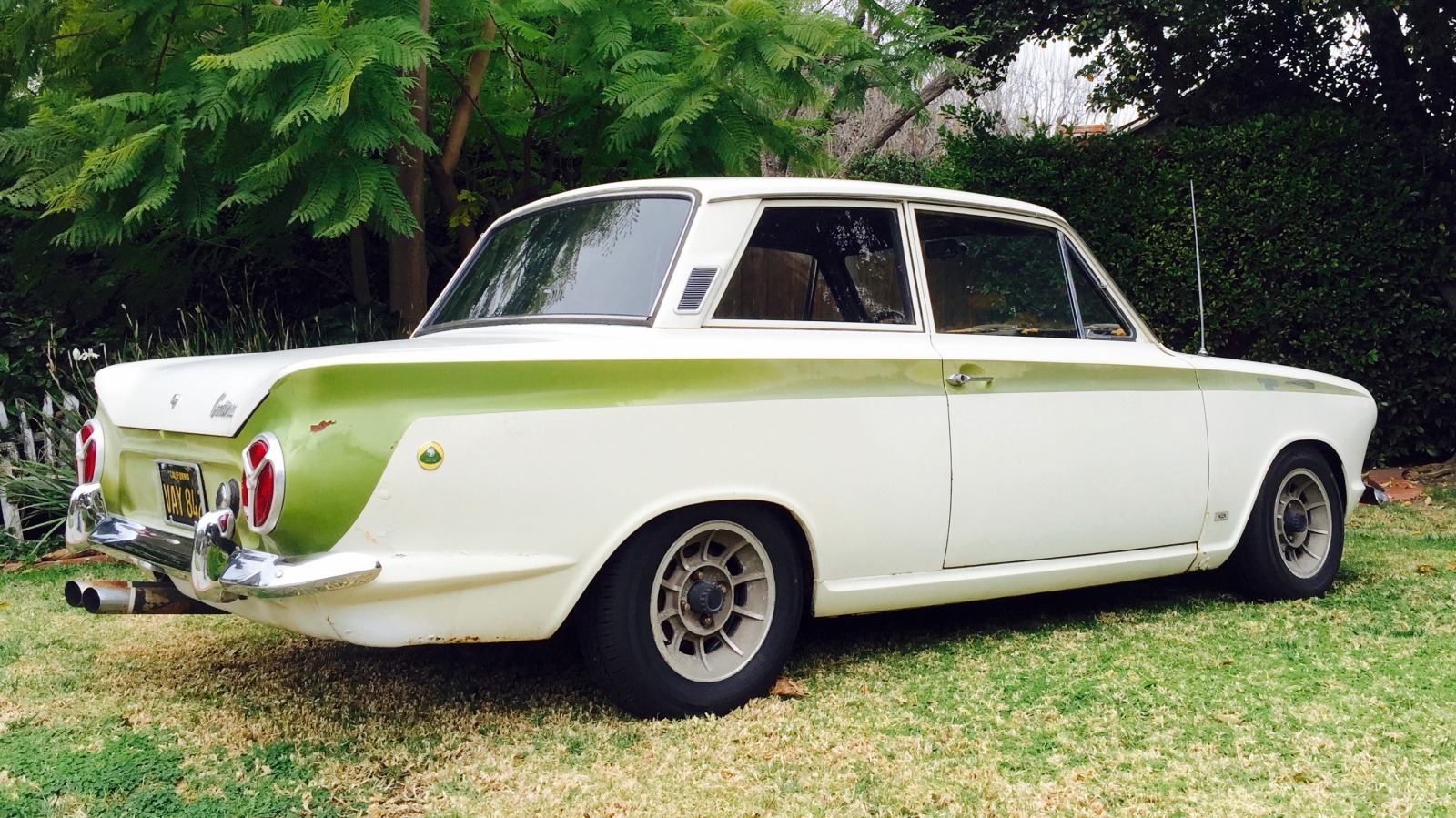Lotus Cortina is the term commonly used for the Ford Cortina Lotus, a high-performance sports sedan, which was produced in the United Kingdom from 1963 to 1970 by Ford in collaboration with Lotus Cars. The original version, based on the Ford Cortina Mark 1, was promoted by Ford as "Consul Cortina developed by Lotus", with "Consul" later being removed from the name. The Mark 2 was based on the Ford Cortina Mark 2 and was marketed by Ford as "Cortina Lotus".
3,306 Mark I and 4,093 Mark 2 Lotus Curtains were produced.
The history of the Lotus Curtain began in 1961. Colin Chapman wanted to build his own engines for Lotus, mainly because the Coventry Climax unit was so expensive. Colin Chapman's chance came when he hired Harry Mundy (a close friend and engine designer for Coventry Climax and technical editor for Autocar) to design a two-camera version of the Ford Kent engine. Most of the engine development was done in the lower end of 997cc and 1,340cc, but in 1962 Ford launched the engine with five cylinders of 1,498 cc and work centered on it. Keworth Duckworth of Cosworth played an important role in tuning the engine. The engine's first appearance was in 1962 at the Nürburgring in a Lotus 23 driven by Jim Clark. Almost as soon as the engine appeared in production cars (Lotus Elan), it was replaced by a larger capacity unit (82.55 mm to give 1.557 cc). This was to bring the car closer to the 1.6 liter capacity class in motorsport.

While the engine was being developed, Walter Hayes (Ford) asked Colin Chapman if he would fit the engine in 1,000 Ford sedans for Group 2 homologation. Chapman accepted quickly, although he must have been very busy at the Cheshunt factory, with Elan about to be launched. The Type 28 or Lotus Cortina or Lotus Cortina (as Ford liked to call it) was properly launched. Ford supplied the 2-door Cortina bodies and handled all the marketing and selling of the cars, while Lotus made all the mechanical and cosmetic changes. The main changes involved the installation of the 1,557 cc (105 bhp (78 kW; 106 hp)) engine, along with the same narrow-proportioned gearbox from Elan. The rear suspension has been drastically changed and alloy panels have been used for doors, hood and boot. Light covers were fitted to the gearbox and differential. All Lotus factory cars were painted white with a green stripe (although Ford built some to compete in red, and a customer had a dark blue stripe due to being superstitious about green). The cars also received bumpers in the front room and round Lotus emblems were mounted on the rear wings and on the right side of the radiator grille.

The internal modifications were limited to a central console designed to accommodate the new position of the gearshift, different seats and the rear instrument panel, with tachometer, speedometer, oil pressure, water temperature and fuel level gauges. A wooden rim wheel was attached.
The suspension changes on the car were quite extensive; the car received shorter arms at the front, forged track control arms and 5.5J steel wheel rims by 13. The rear was even more radical with vertical coil spring / dampers replacing leaf springs and two drag arms with an A-shaped bracket (which connected to the differential housing and brackets close to the pivots of the drag arm) separating the axle location. To support this configuration, more keys were placed behind the rear seat and rear wheel to the chassis in the boot. The rigidity supports meant that the spare wheel had to be moved from the standard curtain wheel well and bolted to the left side of the boot floor. The battery was also relocated for the boot, behind the right wheelarch. Both changes made major improvements in overall weight distribution. Another improvement that the Cortina Lotus gained was the new braking system (front discs 9.5 in. (240 mm)), built by the braking specialist Girling. This system was also equipped for Cortina GTs, but without a servo, which was mounted in the Cortina Lotus engine compartment.

The engines were initially built by J. A Prestwich of Tottenham and Villiers of Wolverhampton. In 1966, Lotus moved to Hethel, Norwich, where they had their own engine building facilities. The Lotus Curtain used an 8.0 inch (200 mm) diaphragm spring clutch, while Ford mounted helical spring clutches for the rest of the line. The rest of the gearbox was identical to Lotus Elan. This led to some problems because, although the ultra-contracted gear ratios were perfect for the race track or the open road, the clutch suffered a lot from traffic. The proportions were later changed.
The first cars were very popular and won some acclaim; One magazine described the car as a top version of a Lotus 7. It was' The car 'for many enthusiasts who previously had to settle for a Cor tina GT or a Mini-Cooper and also greatly amazed the public that was used for' cars. overweight sports cars like the Austin Healey 3000.


0 comments